In 1981 Dutch fantasy park Efteling decided to add their first roller coaster. Already a well established theme-park they chose to make an investment that would make a big impact on the European market. Working with Dutch manufacturer Vekoma they unveiled the largest roller coaster in all of Europe, Python. Although a copy of the existing Arrow Huss Carolina Cyclone, this 4 inversion monster was unlike anything in the region. It was only 2 years after Blackpool Pleasure Beach had unveiled Europe’s first modern looping coaster and the first time modern inversions appeared in continental Europe. Efteling had built something loopier, larger, and unlike anything else that Europe had seen and it became a phenomenon. Python has been featured in numerous Dutch TV programs, was used by Porsche to film a television commercial, and continues to be one of the most popular attractions in the park. So beloved is this ride that in 2018 the park spent an estimated 4.5 Million Euro ($5.3 Million USD) to re-track the majority of the ride and ensure it continues to run for future generations.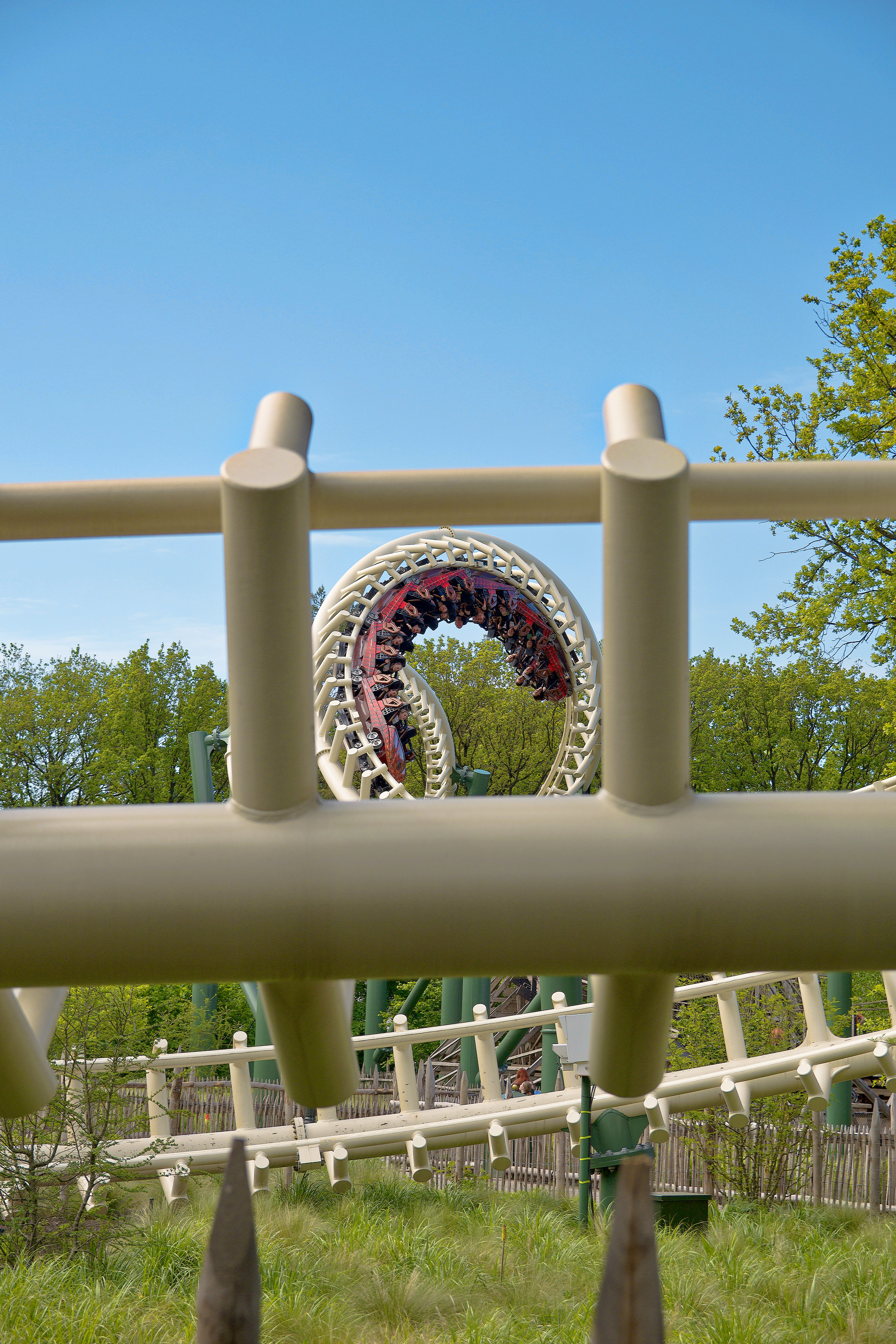
Talking to Sean (our fearless Dutch leader) about the Netherlands’ love of Python got me thinking…does the United States have any roller-coasters we would consider national icons? ACE has coaster landmarks but does the average American citizen know about Phoenix or Thunderhawk? Enthusiasts often deride the general public or “GP” for their obsession with rides we find lackluster or overrated. I would argue that as enthusiasts we all believe roller coasters are an integral part of the American landscape. I am going to discuss some of the coasters I think are a universal part of the American experience and qualify as our national coaster icons. Please note that this is not a ranking and they are listed in the order of their construction.
– In the past, many of our images have been posted, featured, and shared on forums, social media platforms and websites around the web. We work hard to provide the coverage that we do, and we encourage our audience to share our content and use our images, BUT ONLY IF proper credit is given to thecoasterkings.com. Thank you! –
1. Coney Island Cyclone (Luna Park, New York)
One of the biggest hurdles in compiling this list is the sheer size of the United States. Many coasters are state or regional legends but simply do not have the same presence nationally( think California’s two Giant Dippers or Houston’s love of the late Texas Cyclone). Similarly many historical attractions recognized by enthusiasts are less appealing to the general public (Silverwood’s Corkscrew and Lakemont Park’s Leap the Dips are two examples). My first icon is both historical, regional, and has become an American treasure, the Coney Island Cyclone. Opening in 1927, the Cyclone remains a thrilling ride that many consider one of the best in the world. Its twisted layout has directly and indirectly influenced the design of many wooden roller coasters. Although its reputation has lessened significantly with the advent of more modern wooden coasters it is hard to argue with the fact that it remains New York’s and by default America’s roller coaster.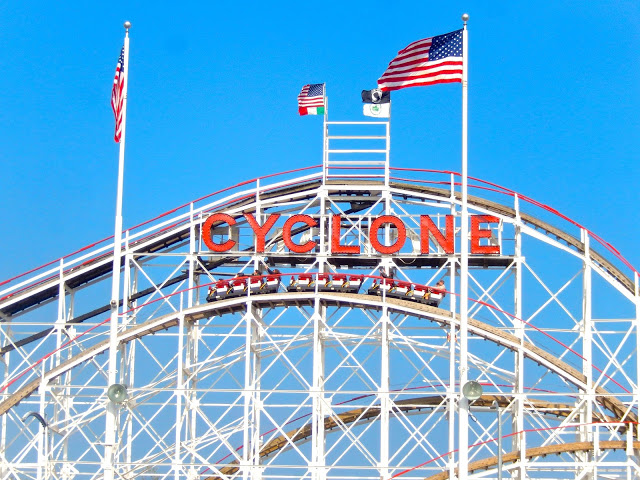
2. Space Mountain (Magic Kingdom, Florida)
In 1959 Disneyland introduced the world to the first tubular-steel roller coaster with the Matterhorn Bobsleds. While important the Matterhorn never got the reputation as one of the nations most thrilling roller coaster creations. With the introduction of Disney World in 1971 Disneyland’s place as the theme-park leader would slowly be eclipsed. It would be Disney World’s 1975 spiritual successor of the Matterhorn that would capture the imagination of the world. Timed perfectly with the rise of the regional amusement parks and the coaster wars that accompanied them, Space Mountain almost immediately became one of America’s most famous thrill rides. Enclosed roller coasters had been built before but none had tried to utilize darkness to simulate outer-space. Combine this new sensation with the general lack of information surrounding the “guts” of the attraction and you have something unlike any other ride in the world. Space Mountain has almost become synonymous with thrill rides in modern America. While Disneyland’s 1977 version is considered superior by many, the Disney World original remains something cherished by the millions who visit the Magic Kingdom every year.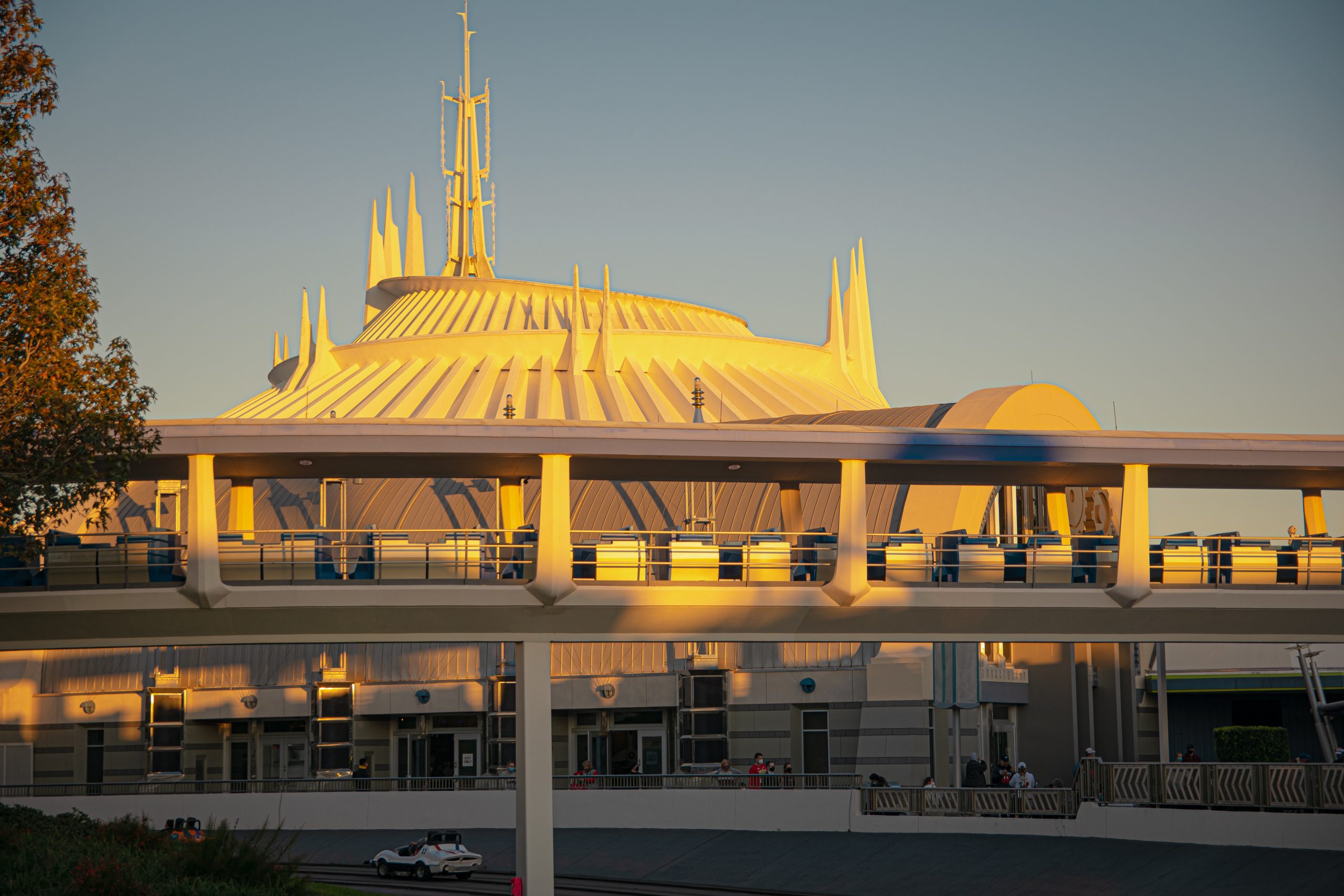
3. The Beast (Kings Island, Ohio)
The first coaster wars had an exciting high point with the introduction of Kings Island’s Beast in 1979. With a name that continues to capture the imagination the Beast remains one of the most recognizable roller coasters in America. When it opened in 1979 the Beast was not only the world’s longest (7,359 ft) roller coaster it was also the fastest(64.8 mph) and featured the tallest drop (141 ft). Though touted as remaining the world’s longest wooden coaster it also remains the United States’ longest coaster overall. The Beast received national media attention upon its unveiling and made a wooden roller coaster do things none had done before. The peers that it competed with seem to have all come and gone. Magic Mountain’s Colossus got the RMC treatment, Cedar Point’s Gemini has been relegated to the role of supporting coaster, and Great America’s American Eagle never seemed to capture the American public’s attention in the same way. The Beast was a different breed than those large scale woodies of the late-70s and early 80s. Its wooded setting continues to provide a sense of mystery and thrills that fascinate the public; it has never been “lame” to ride the Beast. The Beast remains an important rite of passage for many Americans. While it might not be objectively one of the best coasters in America the Beast is a national icon. After all it’s the only roller coaster that has its own book by R.L. Stein.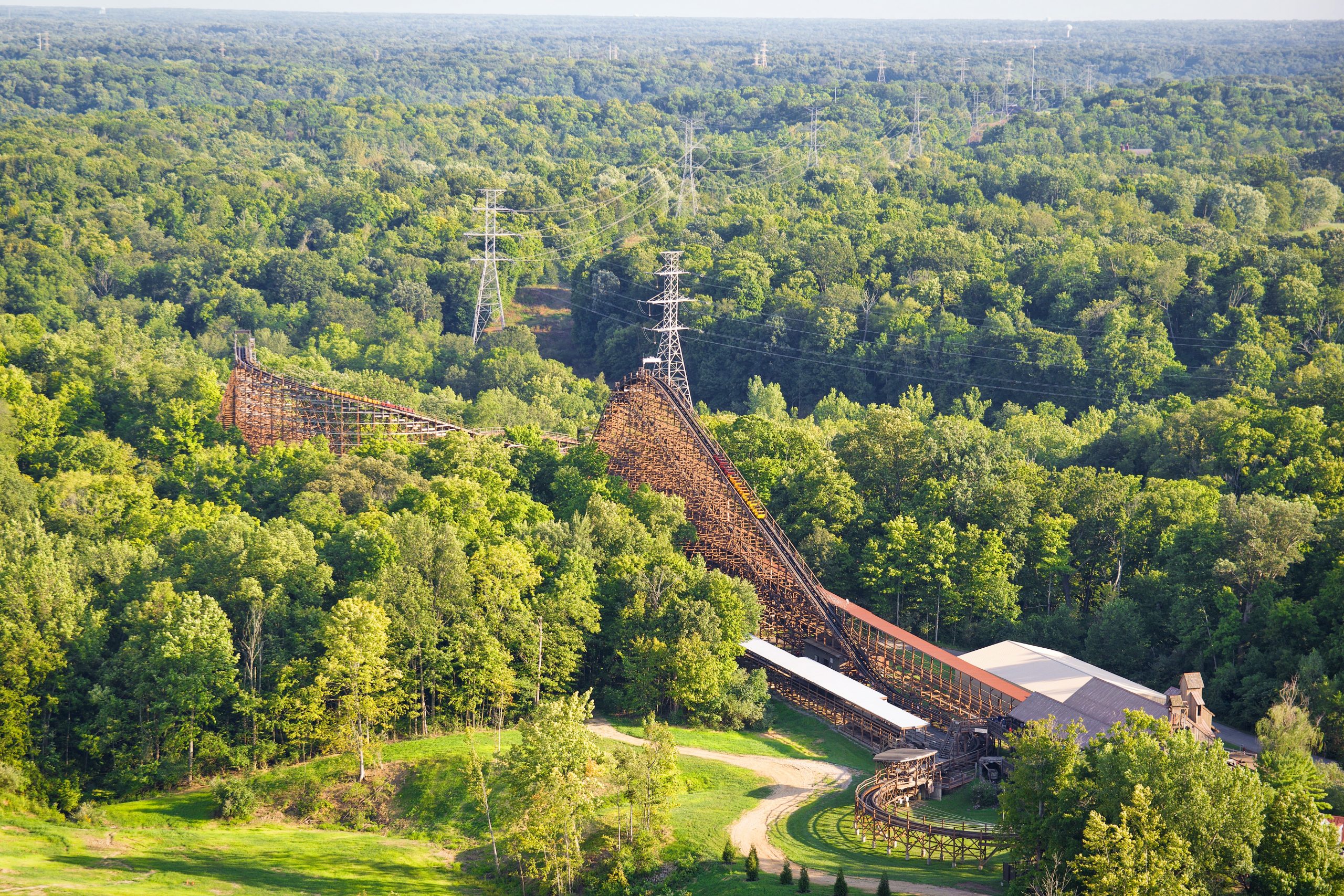
4. Millennium Force (Cedar Point, Ohio)
Kings Island’s Ohio rival turned sister, Cedar Point, is home to many iconic coasters. I think its trio of record breakers are all American icons. The fact that one park was able to break the height and speed record three times with Magnum XL200, Millennium Force, and Top Thrill Dragster is still the biggest flex in theme park history. If I have to pick one of three that continues to have the biggest presence as an American icon it has to be Millennium Force. We are quick to forget that North America was without another Giga Coaster until 2010’s Intimidator 305. For almost a decade Millennium Force stood as the largest traditional roller coaster in the western hemisphere. It’s distinctive supports and lakeside location remain unique. Millennium Force has won the Golden Ticket Award for best steel coaster more times than any other steel coaster(11) since the award’s creation in 1998. For an entire generation it stood as the ultimate thrill-ride, much like Magnum did before it. Unlike Magnum, Millennium Force has never really aged in the eyes of the public. It still commands some of the longest lines in the park and many of my friends who are members of the general public still consider it the best coaster.
5. X2 (Magic Mountain, California)
Throughout the late 90s and early 2000s Cedar Point’s rivalry with Six Flags Magic Mountain led to the construction of some of the world’s most famous coasters. Ready to steal the spotlight from Millenium Force, Magic Mountain planned a coaster for 2001 that was unlike anything the world had ever seen. After a delayed construction process X opened in 2002 as the coaster of the future. Not only was X unlike any coater that came before it, it also featured a 215 ft near vertical drop at a time when only two other coasters had come close to a drop of that steepness(Oblivion and its Taiwanese clone). While it was the final nail in the coffin for Arrow X led to the B&M wing coaster and S&S 4D free spin, both of which continue to capture the public imagination. With a clever 2008 refresh X2 seems poised to remain one of the most unique and thrilling roller coasters ever built. Like the other rides on this list it also remains one of the marque attractions of it’s park and with Six Flags’ growing shyness towards major investment it likely will remain so. While enthusiast opinions surrounding the ride can be mixed, the general American public sees it for what it is, one of America’s ultimate thrill machines.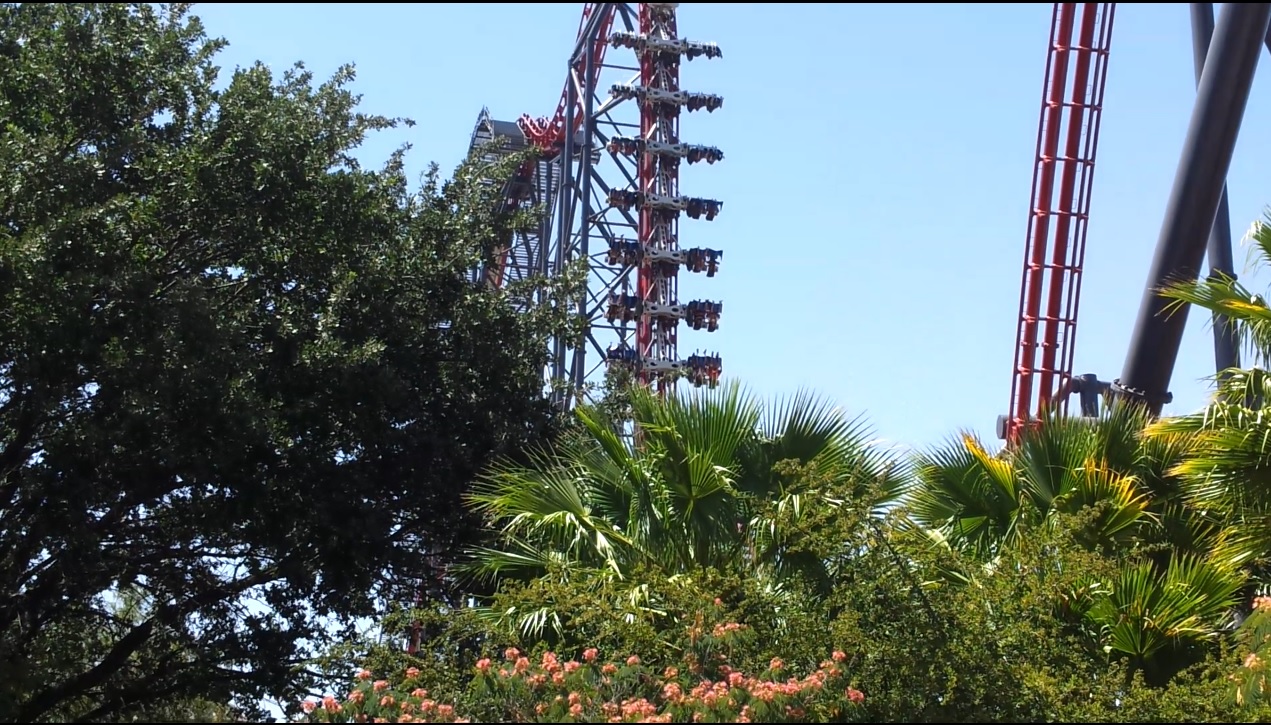
I think these five coasters have become symbols of the American roller coaster that would be difficult for any park to remove. Despite their age their significance in American culture has remained steady. Do you think I missed any important coasters? What rides would you include? I wanted to include Loch Ness Monster but feel that its importance has faded significantly through the years. What coasters do you think will become American icons with time? I would argue that Fury 325 is quickly becoming a coaster people talk about with reverence. Let me know your thoughts below!
Thank you for checking out this article! If you like our content and are looking to support our website, consider shopping on Shop Coaster Kings, or Shop Coaster Kings Europe this holiday season!



Great list. I agree with the first four whole-heartedly, but not with X2. While I’d rank Matterhorn ahead of it, to me, Santa Monica West Coaster is California’s iconic coaster due to its oceanside setting and appearance in the background of so many commercials, TV shows, movies, etc. that are seen by millions of people around the world.
I like the list. I’m 63 years old and I’ve been riding the Beast 10-15 times a year since it opened. The best time is after dark in the front seat. I take extra calcium just so I don’t end up with broken bones when I’m 80-90 and still riding it. Told my kids after I die before they bury me they have to strap my coffin into the front seat for 1 more ride. I’ve been on 3 of the other 4. They are all great but the Beast is the most intense.